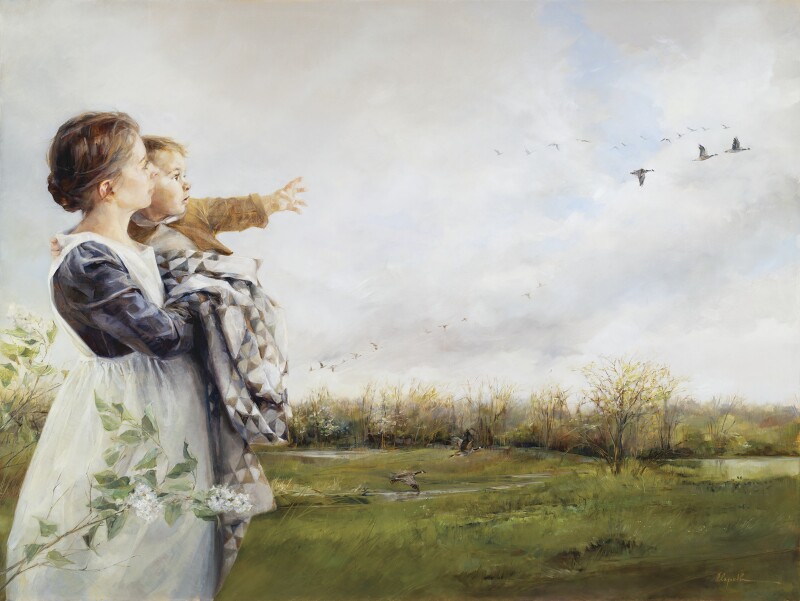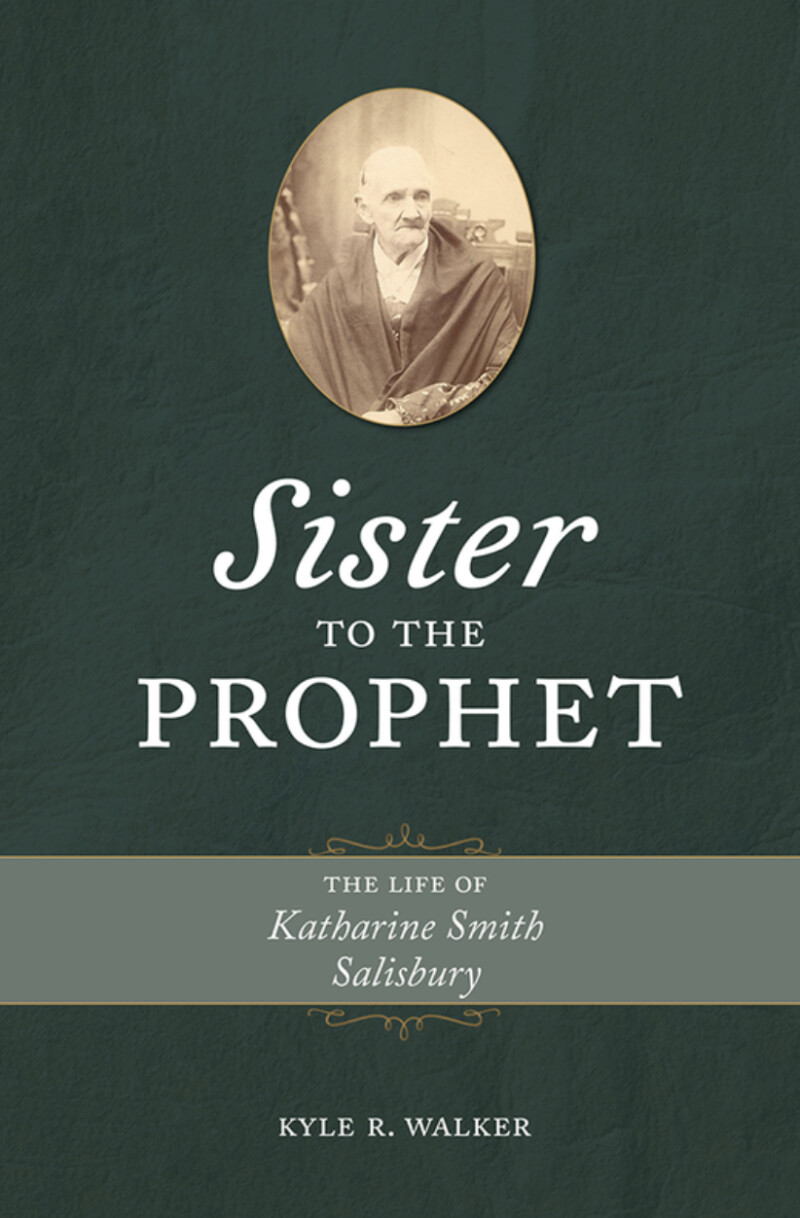Editor’s note: The following excerpt is from Sister to the Prophet: The Life of Katharine Smith Salisbury. Katharine Smith Salisbury was one of eleven family members present when her brother Joseph Smith recounted his earliest visionary experiences.
Katharine was fourteen when Joseph brought the plates home in the fall of 1827, mature enough to be an active and eager participant in the foundational events leading to the organization of the Church of Christ.
For the next three years, Joseph would be consumed with protecting and translating the plates, and his family viewed themselves in a similar, albeit supportive role in the process. At least part of that perception stemmed from what Joseph related to them about Moroni’s instructions, in which he directed family involvement, including a strict charge to keep the Book of Mormon plates safe from outsiders. Joseph also shared Moroni’s warning of the necessity of the entire family keeping the plates secret or their very lives would be in peril.
When Joseph was initially unable to obtain the plates until he was more spiritually-minded, Lucy recorded that it wasn’t just Joseph that needed to be prepared, but that “we”—the whole family—”doubled our diligence in prayer and supplication to God.”1 The Smiths strove to be worthy of such an important assignment, and once the plates were finally in their home, they were vigilant to fulfill the Angel’s charge to use all their efforts to preserve and protect them.
Like her mother, Katharine viewed protecting the plates and assisting with the publication of the Book of Mormon as a family effort. On one occasion, when recounting early Restoration events to a congregation of Saints later in life, Katharine declared, “I stand before you a remnant of the family that brought forth the sacred record.”2
Such warnings about the family’s safety were impactful on a fourteen-year-old girl, as evidenced in her surviving recollections. It’s no wonder that Katharine remembered this three-month time period when the plates were in the Smith home as one in which the home environment became filled with watchfulness.3
“We got a chest and locked the records up in the house,” recalled Katharine. “From that time on our house was searched all around; and our field and our wheat stacks were searched. The mob was around our house nearly every night, and one night they went into father’s cooper shop and tore up his floor and dug the earth up.”4
At times she described these groups as “crowds,” who would search their property, and in one instance, “trying with iron rods to find the plates.”5 William similarly recalled groups surrounding the house, where they would “throw stones, sticks and dirt against it, and insult us in all manner of ways.”6 Though there were a number of documented instances of groups trying to wrest the plates from Joseph during this time, perhaps she overstated that a mob was around the home every night. Yet the fact that Katharine remembered it that way reveals the impact these events had upon her youthful mind.
Katharine Safeguards the Plates
Katharine also recounted one memorable experience in which she played a central role in safeguarding the plates. She recalled one occasion where Joseph had the plates outside of the family home. Hearing a ruckus outside, Katharine opened the front door just as her brother Joseph “came rushing up, panting for breath, … and in a gasping voice whispered hoarsely, ‘take these quickly and hide them.’” Katharine, obviously prepared for such a circumstance by this juncture, took the bundle from Joseph and rushed to her room, where she and Sophronia slept.
Sophronia pulled back the covers, Katharine placed the bundle on the bed, and then they replaced the covers pretending to be asleep. “The mob, failing to find Joseph outside, returned to the house to search,” as Katharine later recounted the incident to her family, “but they did not disturb the girls since they appeared to be sleeping.”7
The decade of the 1820s was foremost in Katharine’s memories when she reflected on her childhood in later years. Certainly the anxiety and hypervigilance about safeguarding both the plates and the family made these years especially memorable, but it was also because it had been a time where she experienced her own spiritual awakening. There was no question in her mind that her brother possessed the plates, and that it contained a sacred record of an ancient people. The ostracism and fear she experienced was tempered by an air of excitement and increased devotion as the family unitedly prepared to read the promised record and looked forward to formally organizing the Church of Christ.
“Every room was filled with the Holy Ghost,” Katharine recalled of that three-month period in 1827 when the record was in their home. “You could go into any room in the house and feel the presence of the spirit.”8 Her faith was also strengthened by reading the Book of Mormon once it came off Grandin’s Press in Palmyra. “Many times when I have read its sacred pages, I have wept like a child,” recalled Katharine of her conversion, “while the Spirit has borne witness with my spirit to its truth.”9
Katharine was the longest-surviving member of the Joseph Sr. and Lucy Mack Smith family. Her life was filled with challenges, beginning in her youth with religious prejudice and ostracism from her peers. Through all these challenges Katharine remained loyal to her brother Joseph Smith Jr., vouching for his prophetic appointment and successfully perpetuated her faith to her expansive posterity.
Sister to the Prophet
Notes
1. Lavina Fielding Anderson, ed., Lucy’s Book: A Critical Edition of Lucy Mack Smith’s Family Memoir (Salt Lake City: Signature Books, 201), 343; Lucy Mack Smith, Biographical Sketches, 84, 86.
2. Kyle R. Walker, “Katharine Smith Salisbury’s Recollections of Joseph’s Meetings with Moroni,” BYU Studies 41, no. 3 (2002), 11.
3. Mary Salisbury Hancock, “The Three Sisters of the Prophet Joseph Smith, Part 1,” Saints’ Herald 101, no. 2 (January 11, 1954): 12.
4. Walker, “Katharine Smith Salisbury’s Recollections,” 15–16.
5. Frederick V. Salisbury, “The Teachings and Testimonies of My Mother,” 1926-1928, unpublished manuscript, 4, Hancock County Historical Society, Carthage, IL; Eric A. Eliason, “Seer Stones, Salamanders, and Early Mormon ‘Folk Magic’ in the Light of Folklore Studies and Bible Scholarship,” BYU Studies Quarterly 55, no. 1 (2016), 73–93.
6. William Smith, William Smith on Mormonism (Lamoni, IA: Herald Steam Book and Job Office, 1883), 13.
7. Hancock, “The Three Sisters of the Prophet Joseph Smith, part 1,” 12.
8. Oscar Case, Reminiscence, ca. 1894, Tom and Carla Duke Papers, Burlington, IA, typescript copy in author’s possession.
9. Katharine Salisbury (Hancock Co., IL), Letter to Dear Sisters, March 10, 1886, Saints’ Herald 33, no. 17 (May 1, 1886): 260.
For more resources on Church history, check out the articles below.
▶ How Joseph Smith broke courtroom tradition to find the truth (and other takeaways from his legal records)
▶ A quick look (with photos) at the historical treasures acquired with the Kirtland Temple
▶ What’s in a (temple) name? The origin stories of ‘St. George,’ ‘Cardston,’ and more



